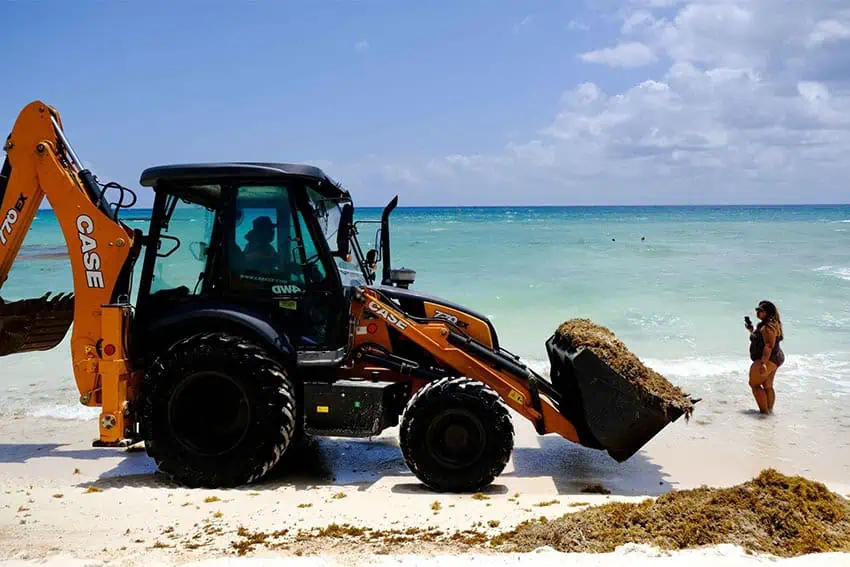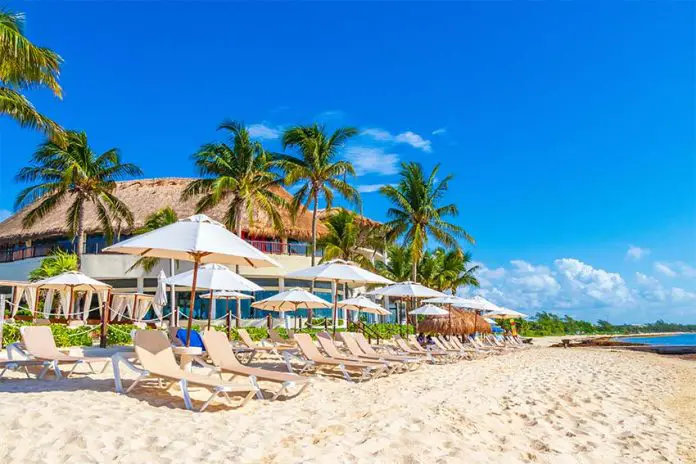The Riviera Maya tourism industry has been pleasantly surprised by the lower amounts of sargassum arriving on Mexico’s Caribbean beaches this year, but lingering high temperatures mean the battle isn’t over yet.
The first Level 2 sargassum alert of the season was issued by Mexico’s Navy (Semar) back in mid-April when a gigantic sargassum mass sighted weeks earlier seemed headed for Mexico’s shores.

However, coordinated mitigation efforts have staved off the worst of Mexico’s sargassum invasion, reported the newspaper La Jornada Maya.
Carla Patricia Andrade Piedras, the director of the Tulum Hotel Association (AHT), told La Jornada Maya late last month that cleanup, temporary storage and disposal efforts have been organized more effectively this season, keeping the area’s beaches white and its Caribbean waters turquoise blue.
Andrade said the AHT would continue cooperating with local, state and federal authorities to be prepared for the inevitable arrival of the floating brown algae as the summer progresses.
The most recent update issued by the Quintana Roo Sargassum Monitoring System on May 17 indicated moderate-to-low amounts of sargassum along Riviera Maya beaches.
On May 31, the newspaper Riviera Maya News reported that sargassum arrivals along Playa del Carmen beaches were down considerably. A week later, La Jornada Maya reported that sargassum collection in Tulum this year was 75% lower than during the same January–May period in 2023.
According to records kept by the Tulum offices of the federal Environmental Ministry, 646 tonnes of sargassum were collected from Tulum beaches during the first five months of 2024, significantly lower than the 2,448 tonnes gathered during the same period a year ago, good news for tourists seeking the beach hotspots of Caribbean Mexico.

Still, Sustainable Environment and Climate Change Minister Lourdes Várguez Ocampo, says the Riviera Maya can expect additional sargassum arrivals this season.
Várguez told Riviera Maya News that the amount of sargassum that arrives on shores is related to an increase in temperature and the maritime currents from the southeast Caribbean Sea and that both conditions were evident.
However, Várguez was hopeful that the sargassum season would end early again this year, given that arrivals stopped in September last year.
Sargassum provides food, protection and habitat for many marine species but can adversely impact coastal ecosystems, tourism and public health when it reaches shorelines, a phenomenon known as an inundation event.
Massive inundation events can form brown tides along the shore, smothering fauna and flora — including coral reefs.
With reports from Riviera Maya News and La Jornada Maya
